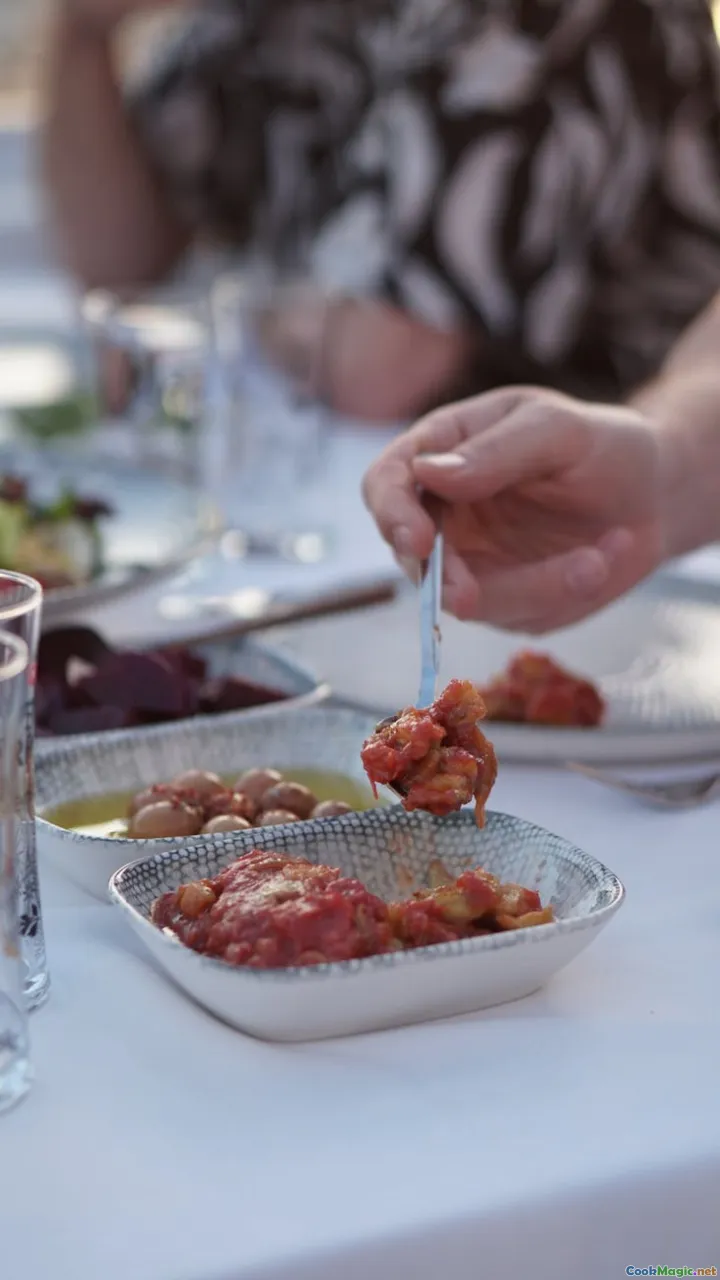The Heart of Cameroonian Cuisine
8 min read Discover the vibrant flavors, rich traditions, and deep cultural roots that define the heart of Cameroonian cuisine in this immersive exploration. April 26, 2025 13:00
The Heart of Cameroonian Cuisine
Cameroon, often called "Africa in miniature," is a land where diverse cultures, climates, and histories converge to create a culinary tapestry as rich and varied as its landscape. At the very heart of this nation lies a cuisine that is not just about feeding the body but about nourishing the soul—an intricate dance of flavors, aromas, and stories passed down through generations. To truly understand Cameroonian cuisine is to embark on a sensory journey that reveals the country's soul, its history, and its communal spirit.
An Introduction: More Than Just Food
Imagine walking through bustling markets in Douala or Yaoundé, where the air is thick with the scent of roasting plantains, spicy peppers, and smoky grilled fish. The sounds of vendors calling out, the vibrant colors of fresh produce, and the warm smiles of locals all beckon you to partake in a cultural feast. Cameroonian cuisine is rooted in community, tradition, and a profound respect for local ingredients.
This cuisine is a reflection of Cameroon’s diverse ethnic mosaic—Bamileke, Bassa, Fulani, Beti, and many more—each contributing their unique flavors and techniques. It’s a cuisine that embraces boldness, balancing heat with subtlety, earthiness with freshness, and simplicity with complexity.
The Pillars of Cameroonian Food
1. Staple Ingredients: The Foundation of Flavors
Cameroonian dishes are built on a foundation of rich, hearty ingredients that are both locally available and deeply ingrained in the cultural fabric:
- Cassava and Plantains: Used in various forms—fufu (a dough-like staple), fried plantains, or boiled.
- Yams and Cocoyams: Essential for preparing fufu and other traditional dishes.
- Maize and Rice: Staples for porridges, stiff porridge, or side dishes.
- Vegetables: Bitterleaf, spinach, okra, and ugwu are common, adding texture and flavor.
- Proteins: Fish (especially smoked or dried), chicken, goat, and bushmeat are prevalent, often prepared with unique local techniques.
2. Local Spices and Flavors
Cameroonian cuisine is characterized by its daring use of spices and herbs:
- Alligator pepper and grains of paradise: Add pungent heat and aromatic depth.
- Pili pili (bird’s eye chili): Infuses dishes with fiery heat.
- Crushed ginger, garlic, and onions: These aromatic staples form the backbone of many stews and sauces.
- Herbs: Such as basil, mint, and scent leaves, contribute fresh, vibrant notes.
3. Signature Dishes
To understand the heart of Cameroonian cuisine, one must delve into its iconic dishes:
- Ndolé: A hearty stew of bitterleaf greens, peanuts, and often complemented by fish or beef.
- Eru (or Nkukhu): A delicately flavored vegetable and meat stew from the Bamenda region.
- Koki: A steamed bean pudding wrapped in banana leaves, rich in flavor and texture.
- Fufu and Njama Njama: Fermented cassava or plantain fufu served with a variety of sauces and leafy greens.
- Grilled Fish and Suya: Marinated, smoked, and grilled fish or meat skewers with spicy seasoning.
Cultural Significance and Food Practices
Communal Cooking and Sharing
In Cameroon, food is a communal affair. Meals are often prepared collectively, with families gathering around large pots of stew or soup, sharing stories, and celebrating together. The act of breaking bread or sharing a bowl of ndolé strengthens social bonds and preserves cultural identity.
Festivals and Food Rituals
Special occasions like weddings, harvest festivals, and religious ceremonies feature elaborate feasts that showcase traditional dishes. For example, the annual Ngondo festival in the Sawa community features a variety of seafood dishes, symbolizing unity and cultural pride.
Food as Identity
Many dishes are tied to specific ethnic groups, with recipes and techniques passed down orally from generation to generation. For instance, the Bamileke people are renowned for their spicy, flavor-rich stews, while the Fulani are celebrated for their grilled meats.
Personal Reflections and Anecdotes
Having traveled across Cameroon, I recall the first time I tasted a steaming bowl of Ndolé in a small village near Bafoussam. The bitterness of the greens was perfectly balanced by the richness of groundnuts, creating a complex, satisfying flavor that lingered on my palate. The communal spirit was palpable as locals shared stories and laughter around the fire, the air filled with the aroma of spices and roasting fish.
Another memorable experience was participating in a traditional Suya grilling session by the roadside, where the smoky scent and fiery seasoning drew crowds. Watching the meticulous preparation—marinating, skewering, grilling—offered a glimpse into the meticulous artistry behind everyday Cameroonian street food.
The Future and Preservation of Cameroonian Cuisine
As globalization influences culinary trends worldwide, Cameroon’s culinary traditions face both challenges and opportunities. Young chefs and food enthusiasts are reviving traditional recipes, incorporating modern techniques while respecting authenticity. Food festivals, culinary tours, and cookbook initiatives are helping to preserve and celebrate this vibrant food heritage.
Moreover, sustainable practices—such as promoting local ingredients and traditional farming—are vital for maintaining the ecological and cultural integrity of Cameroonian cuisine.
Conclusion: A Culinary Heartbeat
Cameroonian cuisine is more than a collection of recipes; it’s a living, breathing reflection of its people’s history, environment, and communal spirit. It invites you to explore a world where fiery spices, earthy greens, and smoky flavors coexist in harmony—each dish telling a story, each meal a celebration of life.
To truly experience the heart of Cameroonian cuisine is to taste the love, resilience, and diversity of a nation that has mastered the art of turning simple ingredients into profound culinary experiences. So, the next time you savor a spicy stew or bite into a crispy plantain, remember—you’re partaking in a tradition that has nourished generations and continues to thrive through the passion of its people.









